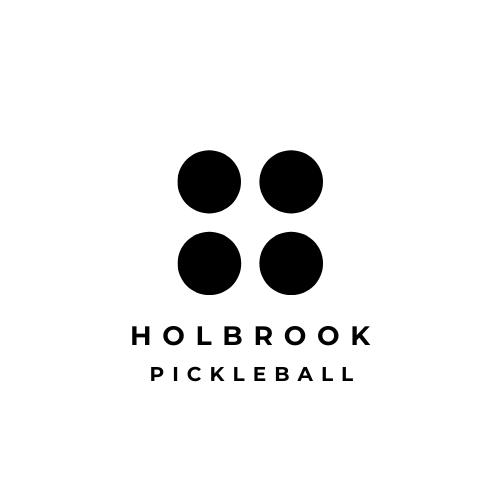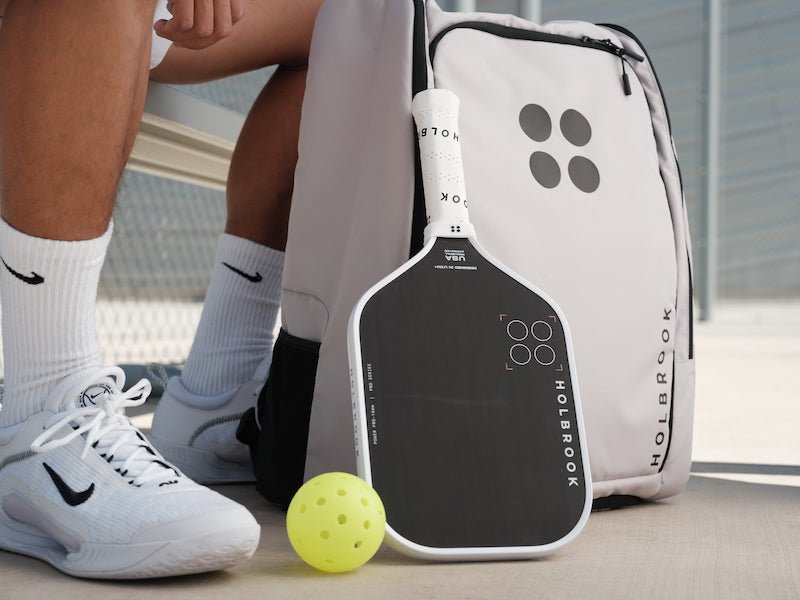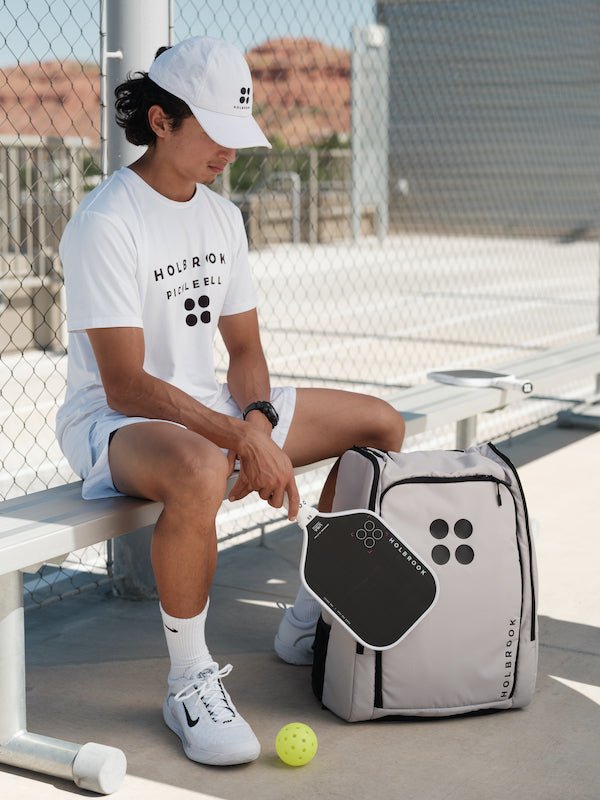Want to start playing singles pickleball but not sure how to? Holbrook Pickleball has got you covered on how to master these rules.
Pickleball, a sport known for it blend of tennis, badminton, and table tennis, has gained immense popularity for its accessibility and fast-paced action. In singles play, mastering the serve is crucial for gaining a competitive edge.
Now let's get into the serving rules for singles pickleball that can help elevate your game.
The Double- Bounce Rule:
The Double-Bounce Rule is a fundamental aspect of pickleball that plays a crucial role in leveling the playing field, particularly in singles matches. This rule mandates that after the serve, the ball must bounce once on the serving side and then again on the receiving side before either player can return the ball with a volley, meaning hitting the ball before it bounces. The non-volley zone, colloquially referred to as the "kitchen," is a seven-foot area extending from the net on both sides. The serve must clear this zone without any interference, ensuring that the serve is neither too advantageous for the server nor excessively challenging for the receiver to return.
This rule significantly impacts the strategy and pace of the game. By requiring two bounces before volleys are allowed, players are prevented from immediately rushing to the net to execute aggressive volley shots right off the serve. This effectively eliminates the chance for early point domination through overpowering net play, which can often be seen in racquet sports without such a rule.
Moreover, the double-bounce rule encourages a more skillful and strategic approach to pickleball. Players must carefully plan their serves and returns, focusing on placement and timing, rather than relying solely on power. It allows for the game to develop beyond the serve and return, promoting longer rallies and more engaging gameplay. Additionally, this rule gives both players the opportunity to position themselves effectively on the court, fostering a more balanced and competitive exchange.
The inclusion of the kitchen or non-volley zone in this rule also adds a unique tactical layer to pickleball. Players must skillfully navigate this area, as no volleys can be played from within the kitchen, further emphasizing the importance of groundstrokes, placement, and movement in the early stages of a point.
In essence, the double-bounce rule is more than just a regulatory measure; it's a strategic element that enriches pickleball, making it accessible and enjoyable for players of varying skill levels. By ensuring that the game starts fairly and reducing the possibility of early point domination, this rule helps maintain the spirit of competition and fun that pickleball is known for.
Service Sequence:
- Serve from the Right Court: The server starts on the right side of the court and serves diagonally to the opponent's right service court.
- One Foot behind the Baseline: The server must have one foot being the baseline while serving. The other foot can be inside or outside the court.
- Underhand Serve: The serve must be made underhand, with the paddle below the server's wrist. Overhand serves, as seen in tennis, are not allowed in pickleball.
- Contact below the Waist: The server must strike the ball below the waist, ensuring a controlled and fair serve. The waist is defined as the navel level.
- Serve Speed: The serve should be hit with a controlled speed. Excessive power or speed can result in a fault.
Faults and Let Serves:
-
Foot Faults
A foot fault occurs when the server steps on or over the baseline during the serve. In pickleball, the server must keep both feet behind the baseline until after the ball is struck. This rule ensures that the server does not gain an unfair advantage by starting closer to the net. Foot faults also extend to the non-volley zone: if a player steps into this zone on the serve before the ball has bounced on the opponent's side, it is considered a fault. These restrictions emphasize the importance of serving technique and positioning, encouraging players to develop precise serving skills.
-
Non-Volley Zone Violation
The non-volley zone, or the "kitchen," is a key area in pickleball, especially regarding serving. If the server steps into this zone before the ball bounces on the opponent's side, it results in a fault. This rule prevents players from executing an aggressive serve-and-volley style of play, maintaining the game's balance between serving and returning players. It reinforces the strategic element of pickleball, where positioning and movement are as crucial as the shots themselves.
-
Ball Hits the Net (Let Serves)
In pickleball, if the serve hits the net but still lands in the correct service court, it is considered a "let" serve, and the server is granted another attempt. This rule differs from some other racquet sports where a serve hitting the net and landing in play would often be considered in play. Let serves ensure that the serve is clearly in play and fair, giving both players an equal opportunity at the start of the point. It also adds an element of forgiveness to the serving rules, allowing for minor errors without immediate penalty.
-
Out-of-Bounds Serve
A serve that lands outside the correct service court or in the non-volley zone is considered out and results in a fault. This rule emphasizes the importance of accuracy and control in serving, as players must carefully aim their serves to land within the designated boundaries. It challenges players to balance power and precision, ensuring that serves are not only strong but also strategically placed.
The Role of Serving Rules in Game Strategy
These serving rules collectively ensure that the game starts under fair conditions for both players, preventing any immediate advantage that could be gained from aggressive or overly powerful serves. By understanding and adhering to these rules, players can focus on developing a comprehensive game strategy that includes effective serving, strategic positioning, and skillful play. The precision required to avoid faults and let serves encourages players to practice and refine their serving technique, contributing to the overall skill level and enjoyment of the game.
In summary, the rules surrounding faults and let serves in pickleball are designed to enhance the fairness, strategic depth, and enjoyment of the game. By mastering these aspects of serving, players can ensure a competitive and enjoyable experience for both themselves and their opponents.
Are you ready to hit the court? Before you do head over to www.holbrookpickleball.com and checkout our awesome paddles and gear to elevate your pickleball game.




